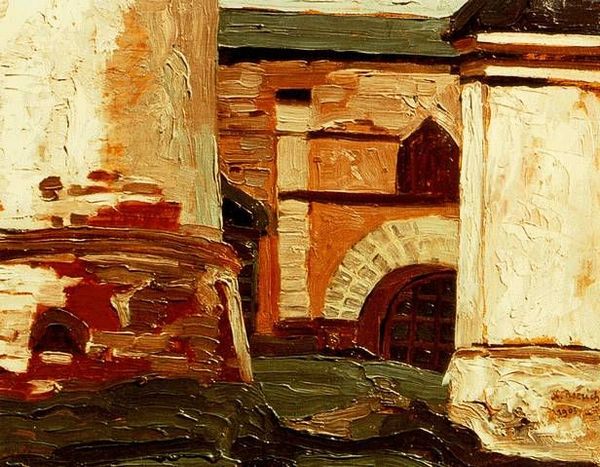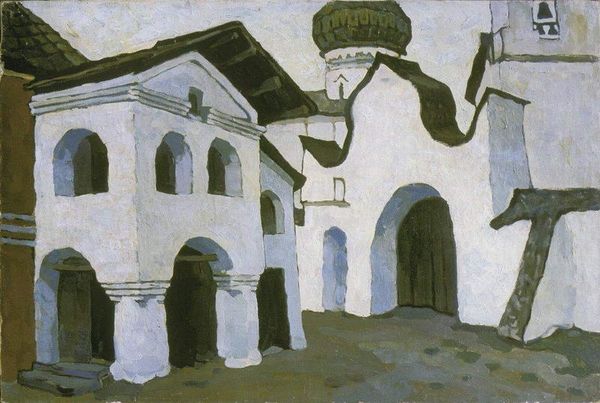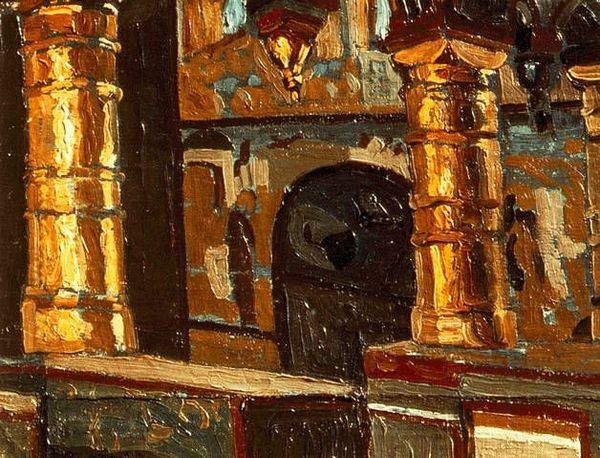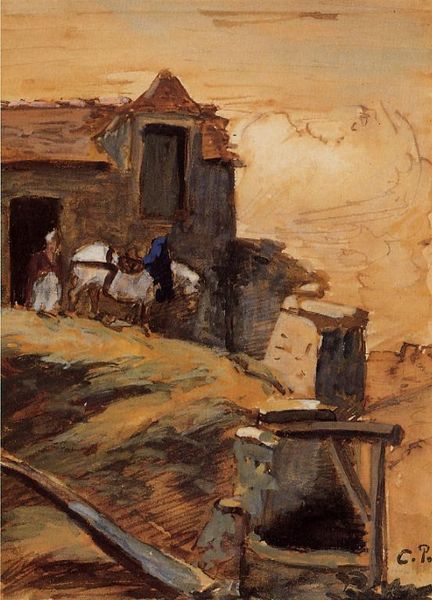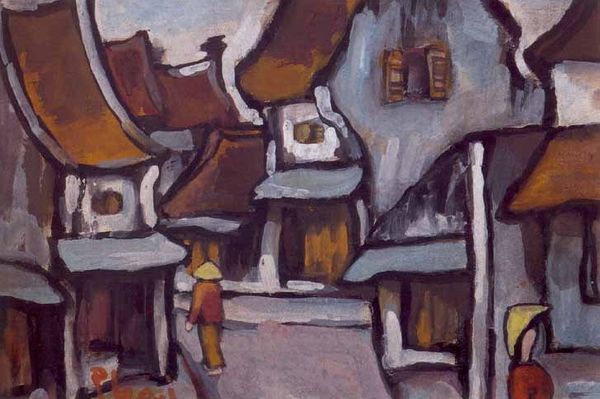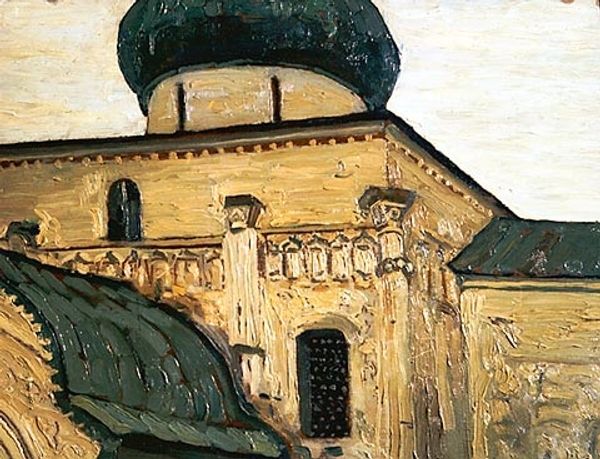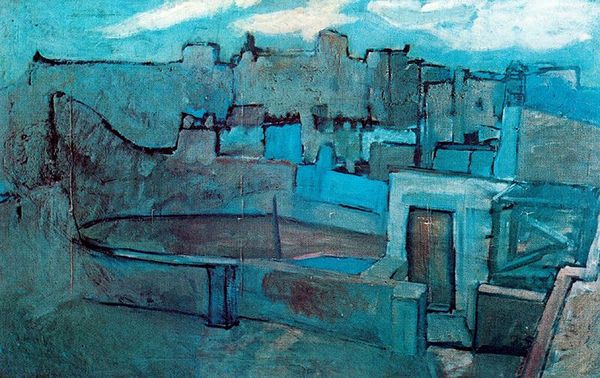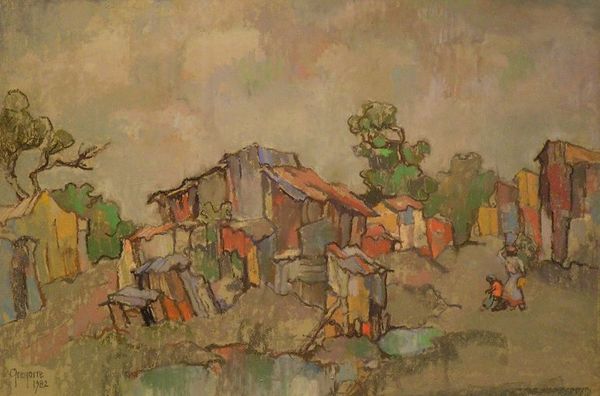
Smolensk. The porch of the convent. 1903
0:00
0:00
nicholasroerich
State Museum of Oriental Art, Moscow, Russia
painting, oil-paint, architecture
#
medieval
#
painting
#
oil-paint
#
landscape
#
oil painting
#
russian-avant-garde
#
architecture
Copyright: Public domain
Curator: This oil painting by Nicholas Roerich, dating from 1903, is titled "Smolensk. The porch of the convent." Editor: My immediate impression is one of austere tranquility. There's a stillness here, a weightiness, rendered with such deliberate brushstrokes and earth-toned colours that it feels less like a snapshot and more like a preserved memory. Curator: Yes, it speaks to a historical context, doesn’t it? Note the emphasis on the architectural elements – the heavy roof tiles, the stout pillars, the steps leading upwards. Roerich presents the viewer not just with an image, but with a palpable sense of material, the very construction of a place of religious and social significance. I wonder how much local material impacted the painting? Editor: Definitely, and I find myself focusing on the shadowed areas. The porch becomes a threshold, a liminal space. It hints at a world beyond what's immediately visible – perhaps spiritual, perhaps historical – that's partially concealed. Notice the use of light. Curator: The distribution of light does reveal a play of structural masses. And the material rendering of shadows suggests how important access and labor around the place may have been for the culture of the monastery at the time. The material aspects carry its symbolic load. Editor: Precisely. The upward movement of the staircase mirrors an ascent, maybe both literal and metaphorical. What do you see here that I’m not acknowledging in the picture? Curator: Well, Roerich had extensive knowledge of construction materials in art. For instance, that type of slate tiling used on the buildings in the work probably had specific material constraints for supply chains which may be local. We know how often the history of material supply has shaped our cultures… Editor: An astute point. Knowing that history deepens my understanding, moving beyond immediate visual interpretation into a grounded historical and material context. Curator: Indeed. It enriches my view as well to understand these materials beyond their symbolic purpose and their relation to society at the time. Editor: This exchange, it highlights how much richer an experience is when diverse insights combine. Thank you for shedding light. Curator: The pleasure was mine. It has opened my mind to a few new approaches.
Comments
No comments
Be the first to comment and join the conversation on the ultimate creative platform.
